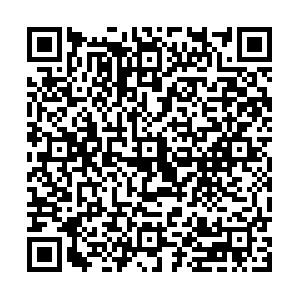|
[1] CHALASANI NP, HAYASHI PH, BONKOVSKY HL, et al.ACG clinical guideline:the diagnosis and management of idiosyncratic drug-induced liver injury[J].Am J Gastroenterol, 2014, 109 (7) :950-966.
|
|
[2]GOLDRING C, ANTOINE DJ, BONNER F, et al.Stem cell-derived models to improve mechanistic understanding and prediction of human drug-induced liver injury[J].Hepatology, 2017, 65 (2) :710-721.
|
|
[3]HUNT CM, PAPAY JI, STANULOVIC V, et al.Drug rechallenge following drug-induced liver injury[J].Hepatology, 2017, 66 (2) :646-654.
|
|
[4]AITHAL GP, WATKINS PB, ANDRADE RJ.Case definition and phenotype standardization in drug-induced liver injury[J].Clin Pharmacol Ther, 2011, 89 (6) :806-815.
|
|
[5]YU YC, FAN Y, CHEN CW.Criteria for the chronicity of druginduced liver injury:3 or 6 months or 1 year[J].Chin Hepatol, 2017, 22 (2) :97-99. (in Chinese) 于乐成, 范晔, 陈成伟.药物性肝损伤慢性化判断标准:3或6个月还是1年[J].肝脏, 2017, 22 (2) :97-99.
|
|
[6]DANAN G, BENICHOU C.Causality assessment of adverse reactions to drugs I.A novel method based on the conclusions of international consensus meetings:Application to drug induced liver injuries[J].J Clin Epidemiol, 1993, 46 (11) :1323-1330.
|
|
[7]DANAN G, TESCHKE R.RUCAM in drug and herb induced liver injury:The update[J].Int J Mol Sci, 2015, 17 (1) :14.
|
|
[8]HAYASHI PH.Causality assessment in drug-induced liver injury[J].Semin Liver Dis, 2009, 29 (4) :348-356.
|
|
[9]The Study of Drug Induced Liver Disease of Chinese.Guidelines for the management of drug-induced liver injury[J].Chin Hepatol, 2015, 20 (10) :750-767. (in Chinese) 中华医学会肝病学分会药物性肝病学组.药物性肝损伤诊治指南[J].肝脏, 2015, 20 (10) :750-767.
|
|
[10]YU YC, MAO YM, CHEN CW, et al.CSH Guideline for the diagnosis and treatment of drug-induced liver injury[J].Hepatol Int, 2017, 11 (3) :221-241.
|
|
[11]FORD R, SCHWARTZ L, DANCEY J, et al.US Food and Drug Administration.Center for Drug Evaluation and Research (CDER) , Center for Biologics Evaluation and Research (CBER) .Guidance for industry:Drug-induced liver injury——premarketing clinical evaluation[J].Eur J Cancer, 2009, 45 (2) :268-274.
|
|
[12]MAO YM, LIU XL, CHEN CW.An introduction of the guidelines for drug-induced liver injury by the U.S.Food and Drug Administration in 2013[J].Chin Hepatol, 2013, 18 (5) :325-330. (in Chinese) 茅益民, 刘晓林, 陈成伟.2013年美国FDA药物性肝损伤指南介绍[J].肝脏, 2013, 18 (5) :325-330.
|
|
[13]NAVARRO VJ, KHAN I, BJRNSSON E, et al.Liver injury from herbal and dietary supplements[J].Hepatology, 2017, 65 (1) :363-373.
|
|
[14]BJRNSSON ES, BERGMANN OM, BJRNSSON HK, et al.Incidence, presentation, and outcomes in patients with drug-induced liver injury in the general population of Iceland[J].Gastroenterology, 2013, 144 (7) :1419-1425.
|
|
[15]LI L, JIANG W, WANG JY, et al.Clinical analysis of acute drug-induced liver disease in 275 cases[J].J Clin Hepatol, 2009, 25 (1) :44-46. (in Chinese) 李蕾, 蒋炜, 王吉耀, 等.275例急性药物性肝病临床分析[J].临床肝胆病杂志, 2009, 25 (1) :44-46.
|
|
[16]ZHOU Y, YANG L, LIAO Z, et al.Epidemiology of drug-induced liver injury in China:A systematic analysis of the Chinese literature including 21, 789 patients[J].Eur J Gastroenterol Hepatol, 2013, 25 (7) :825-829.
|
|
[17]WATANABE I, TOMITA A, SHIMIZU M, et al.A study to survey susceptible genetic factors responsible for troglitazone-associated hepatotoxicity in Japanese patients with type 2 diabetes mellitus[J].Clin Pharmacol Ther, 2003, 73 (5) :435-455.
|
|
[18]WANG XJ, CHEN CW, FU QC, et al.Group-occurring liver injury induced by Zhixue capsules alone:An analysis of 30 cases[J].Chin Hepatol, 2009, 14 (4) :289-290. (in Chinese)
|

 本文二维码
本文二维码


 PDF下载 ( 1625 KB)
PDF下载 ( 1625 KB)

 下载:
下载:

